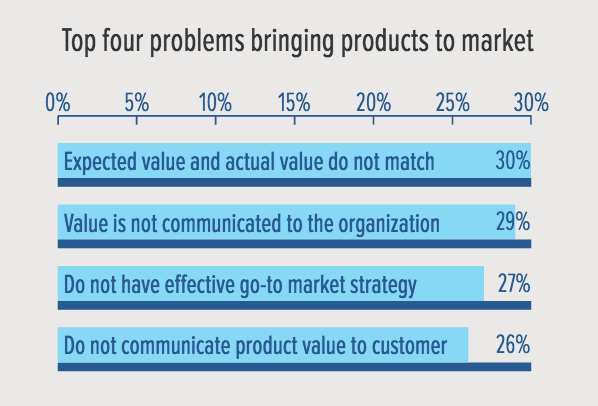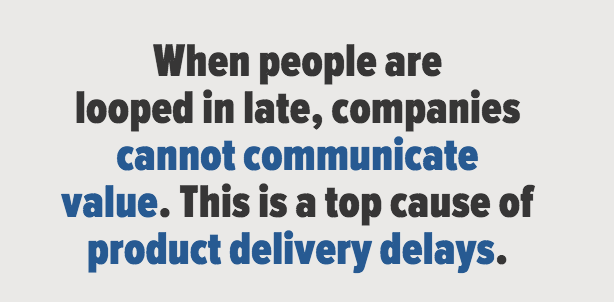5 ways to tackle the complexity of your next big project
5 ways to tackle the complexity of your next big project
Large, complex organizations often suffer from a major challenge — their product development feels like a big black box. When you’re launching an MVP at a 5-person startup, it’s relatively easy to track the progress of the product and get your team in the same room to discuss roadblocks, challenges, and lessons learned for each and every sprint.
As teams start to grow and products begin to evolve, however, so do complexities. How do you get your 100-person, geo-dispersed engineering team in the same room for regular meetings, for instance? Or how do you connect everyone on your 50-person team with every product development stage of a complex banking app?
You don’t.
Instead, you adopt a modern collaboration platform to help. Everyone on your business and engineering teams should have complete visibility into your product’s roadmap, as well as real-time insight into the decisions and activities that are relevant for each member of the product delivery team.
As a project evolves, even small gaps of understanding can create massive problems in the end product. Teams can’t go off and do their own thing; they need a way to keep them focused on the common vision. Otherwise, they risk delivering something that is completely off-base from the initial product concept — inevitability creating an unhealthy degree of separation from the customer’s core need.
You’re not steering a ship. You’re commanding a fleet. Here are five tips to help you enable better and faster decision making for every contributor on your team.
1. Clarify your goals
Often, project leaders focus on delegating tasks. After all, this ‘divide and conquer’ mindset is efficient — when team members know their roles, they can dive right into execution mode.
The problem with this mindset, however, is that people aren’t machines. Successful big projects are ultimately built on a series of smart micro-decisions. With an understanding of the ‘why,’ behind a project, engineers can find ways to innovate and bring their own areas of expertise to the table.
You need to clarify your project’s goals to ensure your project work remains aligned with the initial premise — not just once but continuously.

“As a leader, you need to paint the bigger picture and create an environment that supports cross-team work while not being afraid to dig into the details and push people outside of their comfort zone at times,” says Shan Vosseller, Director of Product at eBay Local.
“Everyone on the team needs to believe in the work they are doing. I constantly connect the work from our team and other teams we are dependent on to the vision and the customers we are serving.”
For every task delegated or project milestone being established, team leaders should always provide as much context as possible. Instead of asking engineers to simply build a drop-down, for instance, ask them to tackle the bigger picture of overcoming friction or building an ‘awesome user experience.’
2. Use systems that make change easier to manage
With complex projects, changes in direction are inevitable. The challenge, however, is that team members are often bogged down with deadlines and lack the flexibility to explore new paths.
You’re focused on immediate tasks, and as a result, you don’t have the time to communicate your changes to every person who might be impacted by a decision or change you have made. As you forge ahead with what you’re building, you start creating collaboration gaps— and if you weren’t held to such rigorous deadlines, you’d have an easier time implementing these changes.
“People are comfortable with the way things work today and often prefer the incremental path to the sure thing rather than the step function change that is more risky and may not pay off for years,” says Vosseller.
That’s why change needs to happen at the process — rather than individual — level.
Instead of creating rigorous constraints, organizations need to offer a way to help team members pivot direction and embrace changes. Systems like Jama, for example, alert relevant team members when requirements change and shows how new information impacts the appropriate product groups.
3. Create more visibility

Teams, when navigating complex challenges, often find themselves bogged down in project details — and it’s tough to take steps forward when you’re buried under more information than is possible to process.
In the automotive industry, for instance, teams are often focused on extremely robust processes.
“It’s not enough to develop a functioning product,” says Ruedi Klein, director of development for electronics manufacturer, digades GmbH, which works in the automotive industry with Audi, BMW, Daimler, and Volkswagen as customers.
“Teams get bogged down easily by details within hundreds of pages of customer requirements, working over one or two years on one single product, says Klein. “Further exacerbating the situation, developers typically have very limited direct exposure to customers.”
One particular challenge that Klein’s team encounters is that progress on large projects will often seem elusive. To avoid frustrating his teams, Klein is always looking for ways to track, measure, and report progress.
“We consistently report upon the previous week’s progress,” says Klein. “In addition, we presented forecasts using the Earned Value Analysis method. The result of this practice was that everybody could see his or her connection to the success of the organization.”
Share your goals with your whole team and make progress as visible as possible.
4. Establish feedback loops
Complex initiatives need continual input from every team member. The problem, however, is that ‘one-off’ emails to solicit feedback can easily become unwieldy quickly. That’s why organizations need to create a clear — and transparent — process for sourcing and managing this input.
The first part of this process involves employee empowerment. Team leaders should ensure that each employee has a clear understanding of his or her role within a project.

“Employee engagement has to be clearly defined and what is the role of the employee in different parts of the product development to avoid the common confusion of roles that happens in such complex organizations,” says Hugo Pereira, growth lead at Talentsquare.
“This confusion and lack of cross functional approach makes large, complex organizations miss customer feedback, build parts of the product that nobody wanted and sometimes even miss to test and engage internally the people that have to be brand ambassadors and sell it to customers.”
Pereira encourages product leaders to develop a clear process for collecting feedback, inputs and ideas from the organization.
“Structure and assess them with a core cross-functional team and roll-out the product always with a mindset of improvement, testing and continuous evolution,” says Pereira.
It was this process that helped Pereira and his team deploy a process for collecting feedback from 60,000 members in 800 offices, across 110 countries and territories.
5. Encourage employees to ask for help when they need it
Mistakes are scary — especially for product teams that are bound to strict deadlines.
To encourage innovation while avoiding time-consuming mistakes, organizations should implement a transparent system for team members to provide input along the process in order to flag issues before they become a larger problem.
If team members run into a roadblock, they should be able to identify subject matter experts to get insight or guidance to help make well-rounded decisions for the company.
When you increase transparency and traceability for upstream decisions, team members are more empowered to solve problems on their own. The result is they make better decisions in the end – and better decisions means fewer mistakes and less costly rework of the product along the way.
